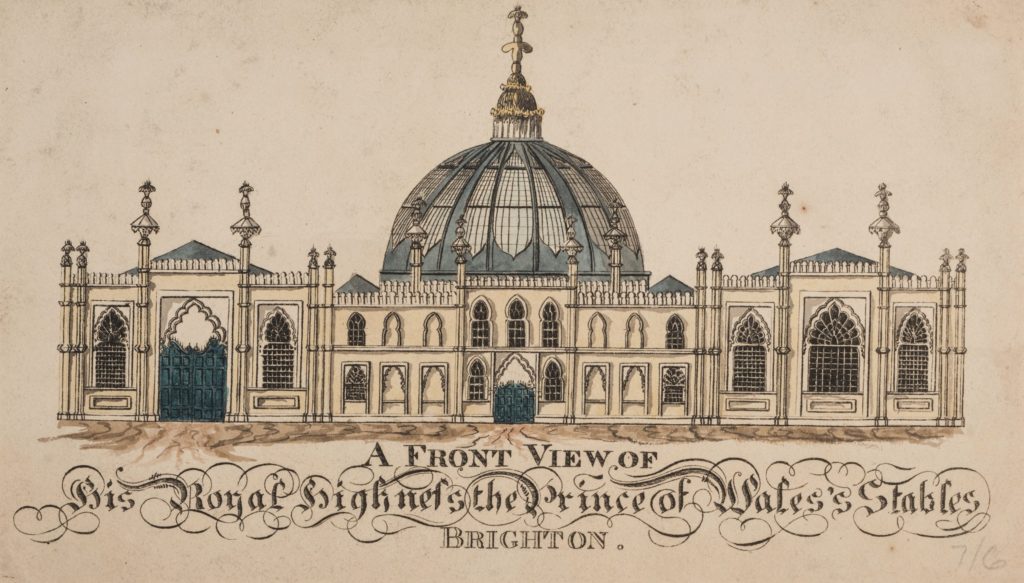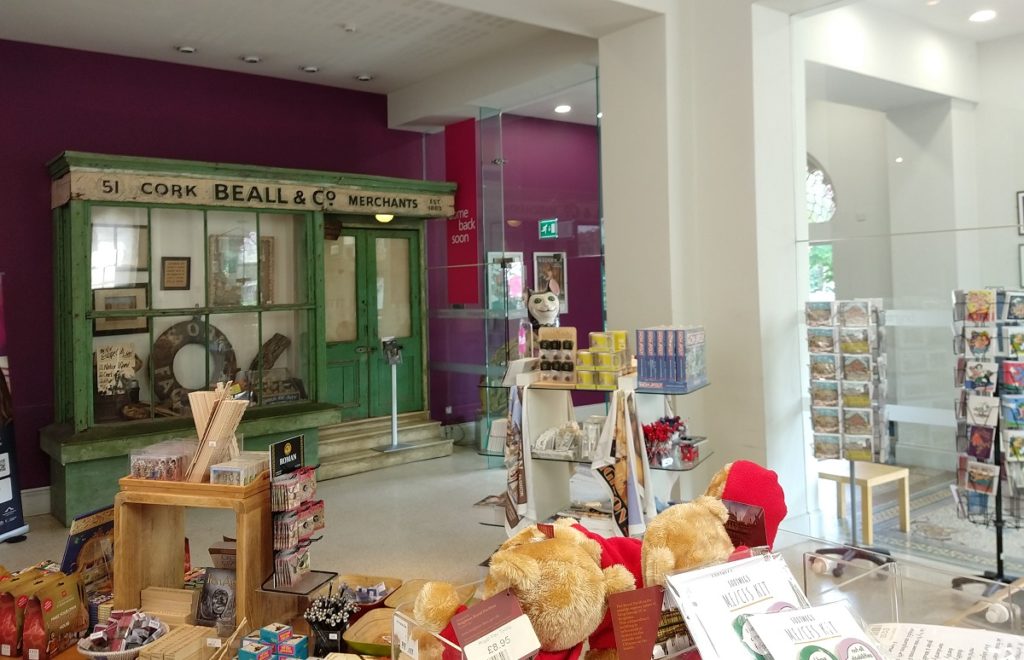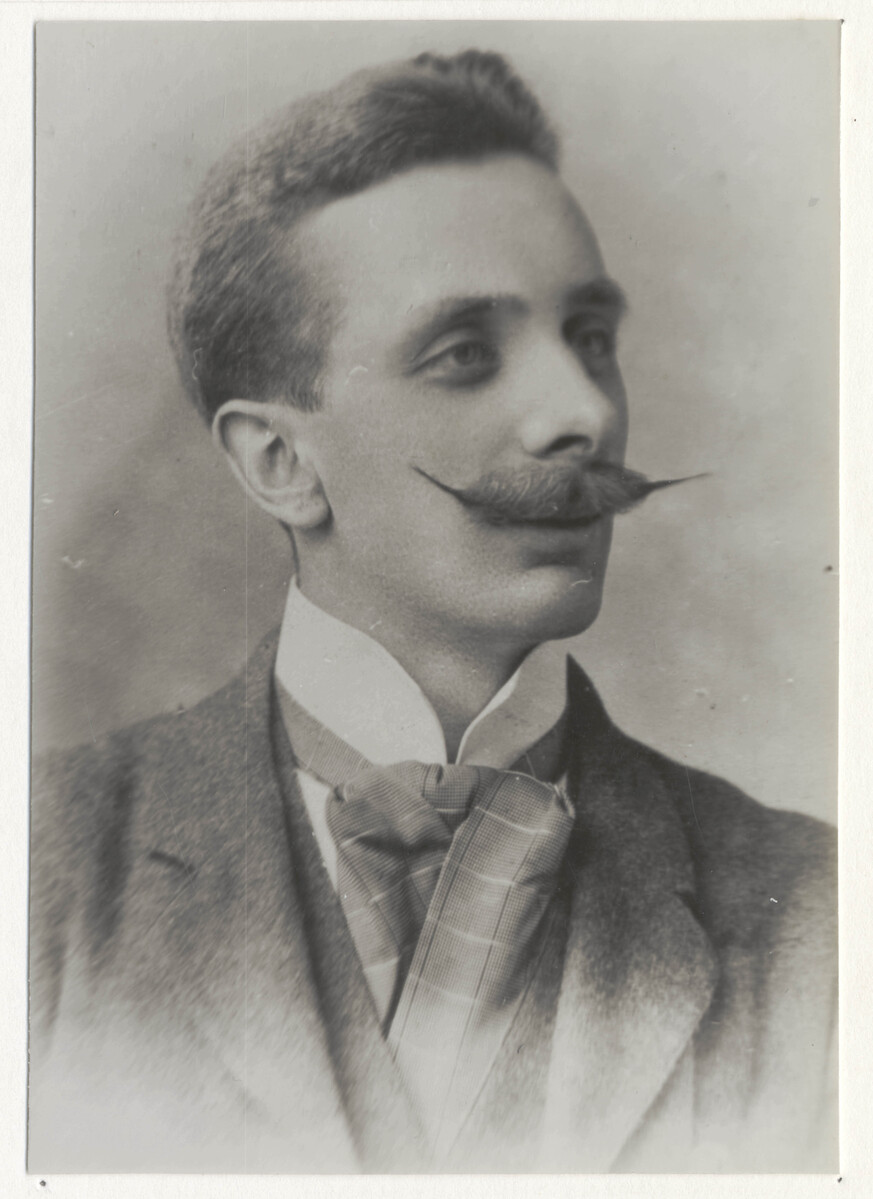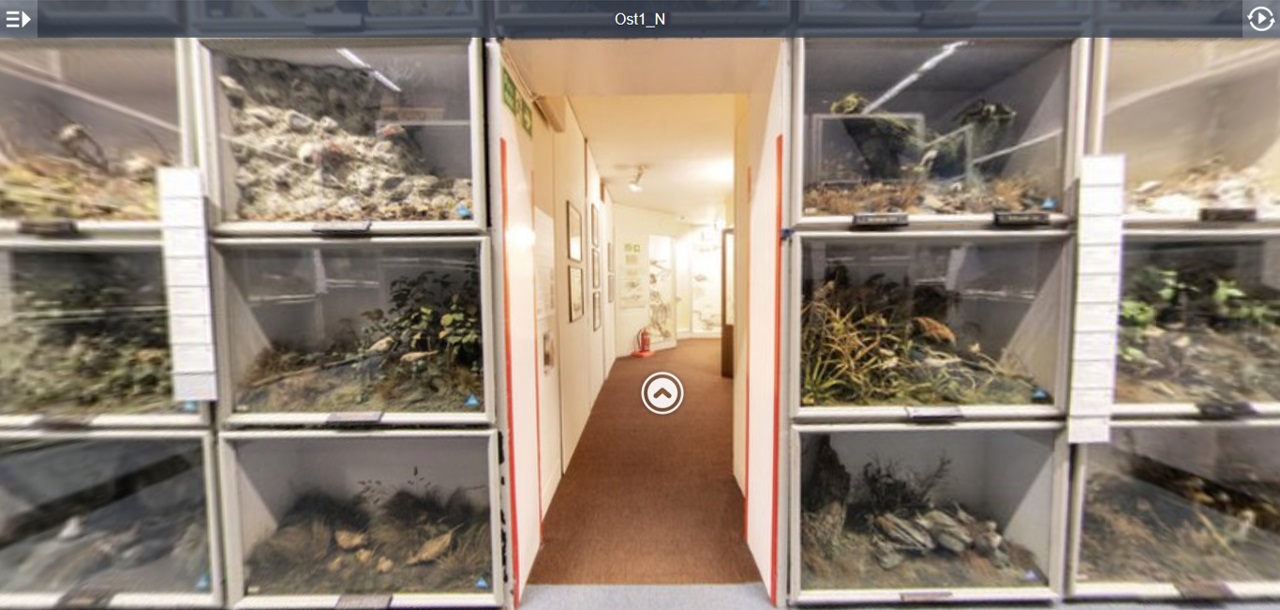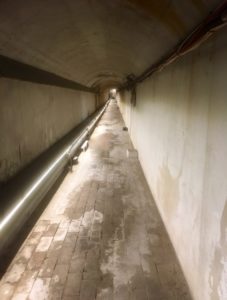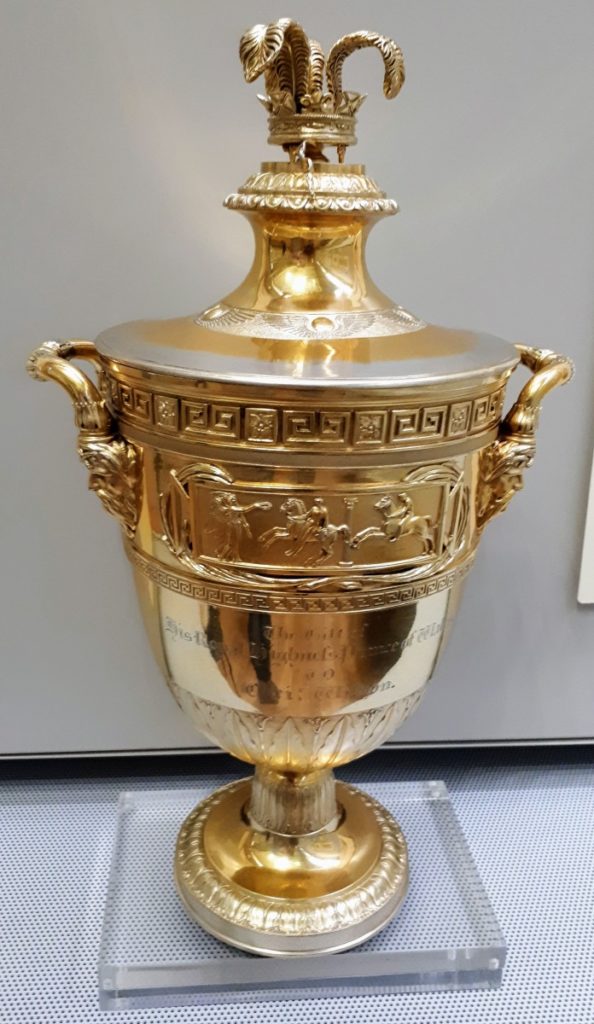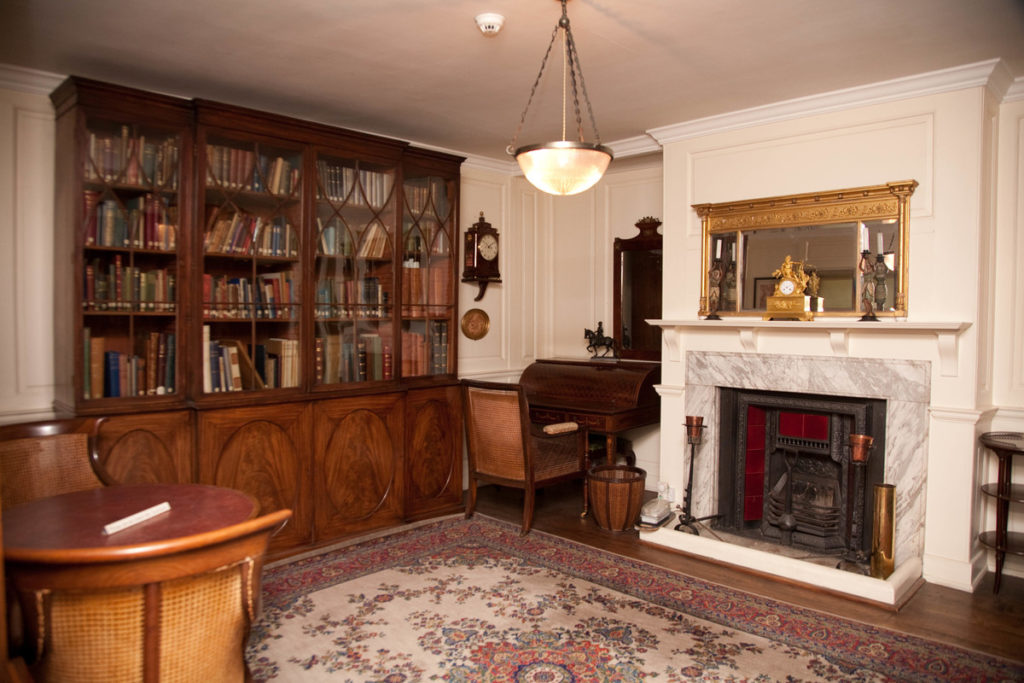
This is a legacy story from an earlier version of our website. It may contain some formatting issues and broken links.
In October we’ll be running House of Ghosts, an event exploring the dark side of Preston Manor. Ahead of this, Paula Wrightson looks at the story of another haunted house, Borley Rectory, and finds some suprising similarities with Preston Manor. Do haunted houses have key ingredients — aside from a ghost?
The Most Haunted House in England

Borley Rectory, 1892 (Public Domain via Wikimedia Commons)
How do you picture the perfect haunted house? I remember in my teenage years reading about Borley Rectory in Essex — ‘the most haunted house in England’ — and being absolutely terrified. My fear was heightened by the house not being some Gothic nightmare mansion of the classic Hammer Horror movie but an ordinary Victorian clergyman’s house in the English countryside. Just the name Borley Rectory sent a shudder up my spine for decades to come and even though the house no longer exists, I should not want to linger around the site of its foundations at dusk.
Borley Rectory was demolished in 1944 but rather like the tragedy of the Titanic the story endures, a perennial fascination. As a haunted house Borley ticks all the right boxes: phantom nuns, a headless man, ghostly footsteps, séances and an ordinary family put there by fate. What fascinates me as I research Preston Manor’s ghost story, are the parallels with the happenings at Borley Rectory and the nature of fear itself.

North House Farm Portslade c.1969. Does this look like the perfect haunted house?
Our triggers to fear
Human beings are hard-wired for fear as an evolutionary mechanism to protect us from the harm caused by enemies and predators. Our ancient brains tell us to stay away from dangerous places, situations and people.
In an essay on the subject Freud links fears of the uncanny (the creepy, the supernatural) to the primitive experiences of the human species. He also discusses our perceptions of fantasy and reality, believability and human subconscious. Freud cites E.T.A Hoffman’s 1816 short story Der Sandmann in which a sinister Sandman throws sand into the eyes of children who won’t sleep resulting in their eyes falling out and then collected by this terrifying character to feed to his children. Through the tale the protagonist, Nathaniel, constantly questions his childhood ‘real’ memories of the Sandman, touching the core of all horror tales.
For a story to be frightening it must also be true. If I knew the book on Borley Rectory that I read in Portslade Library in the 1970s was a work of fiction I would have forgotten it by now. Terror and enduring memory live in true-life narratives.
Is Preston Manor really haunted?
 This is the most commonly asked question regarding the Preston ghosts: are the stories true? The historic ghost sightings at Preston, as at Borley Rectory, come from real-life people who actually lived in the house and in the same historic period: broadly, the last decades of Queen Victoria’s reign and into the first decades of the 20th century. People who actually lived and are not fictional are characters in whom we put our trust – and be assured they are telling the truth.
This is the most commonly asked question regarding the Preston ghosts: are the stories true? The historic ghost sightings at Preston, as at Borley Rectory, come from real-life people who actually lived in the house and in the same historic period: broadly, the last decades of Queen Victoria’s reign and into the first decades of the 20th century. People who actually lived and are not fictional are characters in whom we put our trust – and be assured they are telling the truth.
In Borley’s case the real-life people were clergymen and their families (surely inherently trustworthy). At Preston Manor the witnesses were distinguished persons of high social rank, who one supposes were not given to mischief and tale-telling. Unless you have visited Preston Manor and seen a ghost for yourself, you are reliant on the accounts told by others.
The legend of the ghostly nun

Re-enactment of bricked up nun at Preston Manor
All authentic historic houses have a legend associated with them – all the better if a grisly tale of suicide, murder or similar nasty death. Traditionally, nuns are victim to misfortune and end up as lost wandering souls. In life these unfortunate nuns commonly transgress: they fall in love with monks or they fall pregnant and are cruelly punished by being bricked into walls.
Such wonderfully Gothic tales are invariably too deliciously thrilling to be true. Sir Walter Scott’s epic 1808 poem Marmion tells of an unchaste nun who, aside with her lover, is condemned to the terrible fate of being walled up alive for breaking her vows.
‘For there were seen in that dark wall,
Two niches, narrow, deep, and tall;–
Who enters at such grisly door,
Shall ne’er, I ween, find exit more.’
Scott’s works were popular and widely read and he is credited today with inventing the modern historical novel. Marmion is fiction but readers might easily go away with the notion that the events in the poem were based on reality.
The figure of a ghost nun is the most well-known at Borley. The famous paranormal researcher Harry Price (1881-1948) reported that from 1885 to 1943 at least seventeen people saw the apparition. In 1972 she was even photographed on the south side of nearby Borley churchyard.
Nuns are associated with Preston Manor too and I wonder if the Reverend D… from Bexhill who wrote to Preston Manor’s curator on 25 March 1976 had muddled both the Borley nun and Scott’s Sister Clare when he wrote asking for information for a social anthropology thesis he was writing.
‘Naturally I thought of the famous bricked-up nun of Preston Manor, and how Sir Thomas-Stanford was supposed to have encountered her, or she him’.
The Reverend goes on to make reference to the skeletal find of 1897: ‘they found the bricked-up skeleton of a nun, who had probably been there since the days of the original manor’. Sadly, Sir Thomas-Stanford left no known record of any encounter he might have had with a ghost nun.
The discovery of a skeleton during drainage works at Preston Manor in 1897 is well-documented as the supposed remains of Sister Agnes, a ghostly nun contacted via the 1896 séance. The skeleton could never be proved as that of a nun, but a legend was created.
This event happened during the residency of Eleanor Macdonald, Charles’s mother-in-law. Bones were also found at Borley, both in excavations under the cellar and in the garden, and with much speculation and legend-making about nuns.
The Blue Room
Both Borley Rectory and Preston Manor had a haunted blue bedroom, both reputed as the most haunted room in the house. In both cases the room’s title is supposed to come from the colour of the walls. At Borley the blue bedroom was directly above the library. At Preston the blue room became a library.
Both rooms share knocking noises, raps, thuds and the appearance of apparitions. The blue bedroom at Borley was the room in which the Reverend Henry D E Bull took to his deathbed in 1892 as did his son the Reverend Henry ‘Harry’ Bull in 1927. Eleanor Macdonald died in 1903 in Preston Manor’s blue bedroom after being visited by the ghost of the White Lady who bade her farewell scaring the wits out of the night nurse, Nurse Glasspool, who was sitting up on death watch. The Bull family lived at Borley for the longest period with Harry Bull the equivalent to Preston Manor’s John Bennet-Stanford; born within a decade of each other, both were flamboyant lively and fearless characters, fond of discussing the family ghosts.

The library (formerly the Blue Room) at Preston Manor
Dead pets and plague pits
The Bull family of Borley Rectory created a pet cemetery for cats mirroring Preston Manor’s cemetery for dogs. At Borley the cemetery was situated at the far end of the garden with headboards erected in a circle. Disused once the Bull family left the house in 1927, the cat cemetery still appears on a 1946 plan of the Rectory and grounds.
In 1937 Sidney Glanville, a paranormal investigator working with Harry Price, was concerned at finding the cats’ cemetery dug up and the graves defiled. Enquiries in Borley village elicited no clues as to who had disturbed the graves and why. Glanville re-dug the whole area and found more bones. He believed these to be horses and oxen, although Harry Price suggested the unidentified bones could be human, perhaps part of the skeleton (of the nun, naturally), or rather more eerily, victims of the Great Plague of 1664-65.
Concerns about plague would have touched residents of the large manor house that stood on the site of the current day Preston Manor. Nothing remains of the substantial structure apart from an impressive stone doorway dating to the 1600s which can be seen today in the basement kitchen.

Pet cemetery at Preston Manor
The Preston Manor pet cemetery for dogs has never been disturbed. However, bones have been found in the Preston Manor grounds not far from the pet cemetery. A series of small test pits dug by the Brighton & Hove Archaeological Society in May 2019 resulted in the following report:
‘All of the test pits produced animal bones, with a total of 29 being collected. The majority of the bones, 19 in all, were long bones possibly from sheep/goats. There were 2 fragments of bone from a larger animal consisting of an upper leg bone and a single rib. There were 2 teeth found, probably sheep/goat, 3 very small bones including a rib from either rodents or small mammals and 2 unidentified fragments. One long bone had a curious green staining along most of its length.’

Brighton & Hove Archaeological Society test pit Preston Manor Friday 31st May 2019
Enduring legacy
Once a house gets a haunted reputation, that reputation never dies. In Preston Manor’s case the household admitted to ghosts from the 1880s at least. Henry Roberts, the first curator of the Thomas Stanford Museum (as Preston Manor was then called) was told about the ghosts by a family member who urged him to include them in his guidebook.
Although interested, Mr Roberts decided not to mention the ghosts. Historic house museums in the 1930s were conservative institutions concerned with fine objects and grand furnishings. Even the lives, duties and quarters of domestic servants were disregarded as unimportant and uninteresting so there was no chance for the ghosts to get an airing.
You don’t have to believe in the paranormal to enjoy a good haunted house story. Paradoxically, you can absolutely not believe in ghosts yet still fear seeing one. I often say ghosts are a bit like spiders in your house. You suspect they may lurk in dark corners but you don’t go looking for them and happy co-existence is possible — if they don’t come dangling in front of you making you jump.
The story of the Preston Manor hauntings is an unfolding narrative. Only last summer I was called from my office to meet with a visitor who, while looking with interest at the Victorian knife polishing device in the Servants’ Hall, saw a woman wearing long black clothing appear then disappear close by.
‘Ah yes, the Lady in Black,’ I said because she is a well-known ghost in the house, having been seen before in that spot and on the servants’ staircase, in one of the maid’s bedrooms and crossing the landing.
However, a lady in white was most commonly seen pre-20th century.
‘She is quite harmless and interesting,’ John Bennet-Stanford wrote of the spectre in 1935, adding she ‘was a great friend of my grandmother, Mrs Macdonald, who constantly saw her’.

The Stanford family, 1890s
Preston Manor is often described as a time-capsule and indeed entering the house is a journey back in time. Along with antique furniture and décor, curios and quaint-sounding morning rooms and boot halls, so the ancient household ghosts endure sometimes as stories handed to us from generations past and sometimes as a palpable essence; a figure half-seen, a voice heard through the silence begging the question asked at Mrs Macdonald’s séances: ‘is there anybody there?’
The tangled web
The truth about ghosts can never be known and I have no doubt that in a hundred years’ time people will still be debating the subject and haunted house tours will be as popular as they are today. The Preston Manor ghost stories endure because of their authenticity, the oldest being passed down to us in unique historical record from letters dating to the early 1930s.
Even with such evidence ‘true’ ghost stories are apt to warp with time through the ‘Chinese whispers’ effect causing unintended misinformation to creep out. One fake story can lead to more, similar to how a spider weaves a web: as the story multiplies and the web becomes ever more tangled we can become trapped in fake news.
This effect brings to mind a line from Marmion (often incorrectly attributed to Shakespeare)
‘Oh what a tangled web we weave,
When first we practice to deceive!’
This autumn Preston Manor will unravel its ghostly web and reveal the truth in House of Ghosts, a new and unique event aimed at provoking thought in believer and sceptic alike.
Find out for yourself
On Saturday 19 October the House of Ghosts is an opportunity to find out about the famous hauntings of Preston Manor.
After enjoying a warm yet curiously intriguing welcome, guests will walk haunted corridors, staircases and spaces usually closed to the public and experience the sensation of being where actual hauntings occurred including the infamous blue bedroom. To further experience life in a late-Victorian house a guest medium will take you through a demonstration or sitting (or in 1880s parlance, a séance). The event will end with a Q&A with Preston Manor’s ghost specialists.
Paul Wrightson, Venue Officer (Preston Manor)
